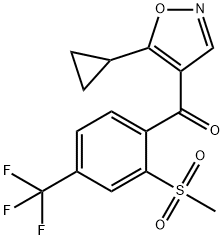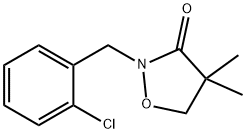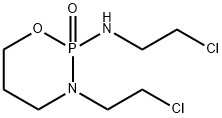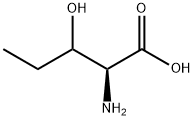ACIVICIN
- CAS NO.:42228-92-2
- Empirical Formula: C5H7ClN2O3
- Molecular Weight: 178.57
- MDL number: MFCD00866432
- SAFETY DATA SHEET (SDS)
- Update Date: 2025-12-04 14:24:59

What is ACIVICIN?
Chemical properties
Off-White Solid
Originator
Acivicin ,ZYF Pharm Chemical
The Uses of ACIVICIN
Azaserine and Acivicin are classical and irreversible inhibitors of γ-Glutamyltranspeptidase
The Uses of ACIVICIN
Inhibits glutamine amidotransferases in purine and pyrimidine synthetic pathways. Tumor growth inhibitor
What are the applications of Application
Acivicin is an inhibitor of GGT used for solid tumor research
Definition
ChEBI: An L-alpha-amino acid that is L-alanine in which the methyl group is replaced by a (5S)-3-chloro-4,5-dihydro-1,2-oxazol-5-yl group. A glutamine analogue antimetabolite, it interferes with lutamate metabolism and several glutamate-dependent synthetic enzymes. It is obtained as a fermentation product of Streptomyces sviceus bacteria.
Manufacturing Process
Starting from commercial, cis-2-buten-1,4-diol, the monotrichloroacetimidate was obtained as a colorless liquid (60%, b.p. 88°-102°C/0.2 mm Hg) by treatment with trichloroacetonitrile (1 equivalent) in tetrahydrofuran at -23°C in the presence of catalytic amount of sodium. Monotrichloroacetimidate upon refluxing in tert-butyl benzene for about 1 hour underwent, smoothly,rearrangement to afford the vinylglycine synton (84%, MP: 30°C). The treatment of the last compound with bromonitrile oxide (3 equiv.) generated in situ from dibromoformaldoxime in ethyl acetate containing excess of KHCO3 and trace amounts of water afforded 3:2 mixture of cycloadducts threo- and erythro-N-[1-(3-bromo-4,5-dihydroisoxazol-5-yl)-2-hydroxyethyl]-2,2,2- trichloroacetamide. The undesired threo- isomer (MP: 164°-165°C) was quantitatively removed from the mixture by fractional crystallization from chloroform. The erythro-isomer (oil) was refluxed with methanolic-HCl for 1 hour to give the chloro-alchohol (50%, syrup), which upon Jones oxidation (with H2Cr2O7/acetone) followed by deprotection of trichloroacetyl group (Ba(OH)2/H2O, H3+O) afforded racemic acivicin (66 %). The synthetic, racemic antibiotic was spectrally (UV, 1H NMR) indistinguishable from
Therapeutic Function
Antineoplastic
Enzyme inhibitor
This cytotoxic isoxazole and copper chelator (FW = 178.57 g/mol; CAS 42228-92-2; Source: Streptomyces sviceus), also known as L-(aS,5S)-aamino-3-chloro-4,5-dihydro-5-isoxazoleacetic acid, AT-125, and NSC165301, strongly inhibitsγ-glutamyl transpeptidase. Its clinical application in cancer treatment failed as a consequence of unacceptable toxicity, and the cause(s) of the desired and undesired biological effects have never been elucidated and only limited information about acivicin-specific targets is available. Target deconvolution by quantitative mass spectrometry (MS) has now revealed acivicin’s preference for the specific aldehyde dehydrogenase known as ALDH4A1 by binding to the catalytic site. Moreover, siRNA-mediated downregulation of ALDH4A1 results in a severe inhibition of cell growth, a finding that may explain acivicin’s cytotoxicity. Targets: Acivicin is thought to be a glutamine analogue, an assumption that is amply supported by its ability to inhibit the following enzymes that possess essential amidohydrolase activities that generate nascent ammonia: asparagine synthetase; carbamoyl-phosphate synthetase; anthranilate synthase; glutamate synthase; CTP symthetase; amidophospho-ribosyltransferase; glutamin(asparagin)ase, or glutaminase-asparaginase; GMP synthase, glutamine-dependent; phosphoribosyl-formylglycinamidine synthetase (formylglycinamidine ribonucleotide synthetase; thiol oxidase; γ-glutamyl hydrolase; imidazole-glycerol phosphate synthetase.
Properties of ACIVICIN
| Melting point: | >200°C (dec.) |
| Boiling point: | 341.6±48.0 °C(Predicted) |
| Density | 1.85±0.1 g/cm3(Predicted) |
| storage temp. | 2-8°C |
| solubility | H2O: soluble10mg/mL (warmed) |
| pka | 2.02±0.10(Predicted) |
| form | White solid. |
| color | white to beige |
| Water Solubility | Soluble in water at 10mg/ml with warming |
| Stability: | Hygroscopic |
Safety information for ACIVICIN
| Signal word | Warning |
| Pictogram(s) |
 Skull and Crossbones Acute Toxicity GHS06 |
| GHS Hazard Statements |
H301:Acute toxicity,oral |
| Precautionary Statement Codes |
P264:Wash hands thoroughly after handling. P264:Wash skin thouroughly after handling. P270:Do not eat, drink or smoke when using this product. P321:Specific treatment (see … on this label). P405:Store locked up. |
Computed Descriptors for ACIVICIN
New Products
4,4-Difluoropiperidine hydrochloride tert-butyl 9-methoxy-3-azaspiro[5.5]undecane-3-carboxylate Indole Methyl Resin N-Isopropylurea N,N-Dicyclohexylcarbodiimide(DCC) MELDRUMS ACID 5-METHYLISOXAZOLE-4-CARBOXYLIC ACID Magnessium Bis glycinate Zinc ascorbate 1-bromo-2-butyne 2-acetamidophenol 9(10H)-anthracenone Erythrosin B, 4-Piperidinopiperidine 2-((4-morpholinophenylamino) (methylthio) methylene) malononitrile 2,4-dihydroxybenzaldehyde 3-(4-morpholinophenylamino)-5-amino-1H-pyrazole-4-carbonitrile Methyl 2-methylquinoline-6-carboxylate 2,6-dichloro-4-nitropyridine 4-Bromo-2-chlorobenzonitrile 2-(benzylamino)acetic acid hydrochloride 4-(tert-Butoxycarbonylamino)but- 2-ynoic acid 3,4-dihydro-2H-benzo[b][1,4]dioxepine 1-Phenyl-1-cycloprppanecarboxylicacidRelated products of tetrahydrofuran








You may like
-
 3-(4-amino-1-oxoisoindolin-2-yl)-1-methylpiperidine-2,6-dione 98%View Details
3-(4-amino-1-oxoisoindolin-2-yl)-1-methylpiperidine-2,6-dione 98%View Details -
 1-methylindoline-2,3-dione 98%View Details
1-methylindoline-2,3-dione 98%View Details
2058-74-4 -
 614-19-7 98%View Details
614-19-7 98%View Details
614-19-7 -
 3112-85-4 Methyl phenyl sulfone 98%View Details
3112-85-4 Methyl phenyl sulfone 98%View Details
3112-85-4 -
 20677-73-0 (2,2-diethoxyethyl)methylamine 98%View Details
20677-73-0 (2,2-diethoxyethyl)methylamine 98%View Details
20677-73-0 -
 3-(4-(hydroxyamino)-1-oxoisoindolin-2-yl)piperidine-2,6-dione 98%View Details
3-(4-(hydroxyamino)-1-oxoisoindolin-2-yl)piperidine-2,6-dione 98%View Details -
 57381-49-4 2-bromo-4-chlorobenzonitrile 98%View Details
57381-49-4 2-bromo-4-chlorobenzonitrile 98%View Details
57381-49-4 -
 4,6-dichloropyrimidine-5-carbaldehyde 98%View Details
4,6-dichloropyrimidine-5-carbaldehyde 98%View Details
5305-40-8
